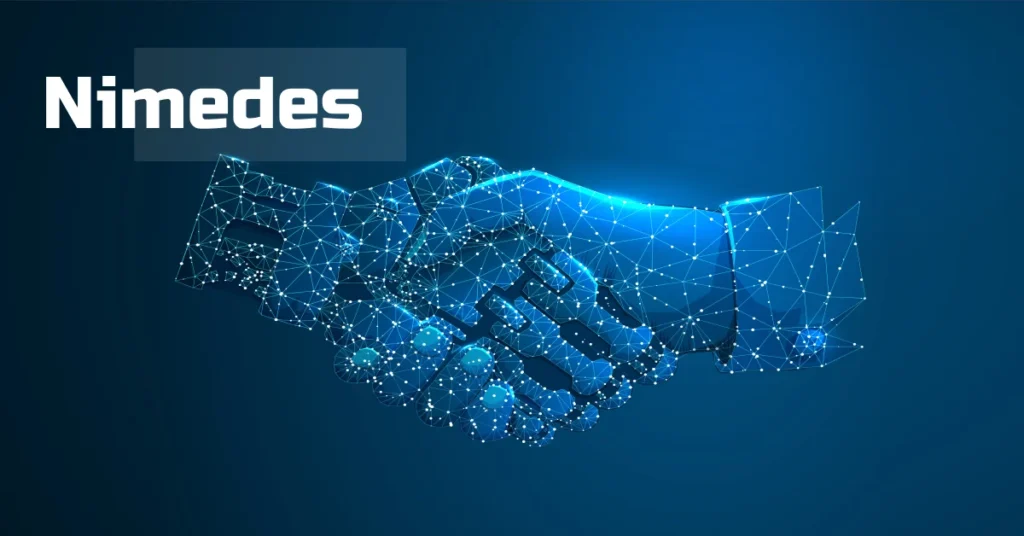In the ever-spinning world of ideas, few words sound as mysterious and modern as Nimedes. It feels futuristic, yet strangely grounded — like a whisper from both science and philosophy. But what exactly is Nimedes? Is it a brand, a movement, a concept, or a way of thinking?
To unpack Nimedes is to explore the intersection of human creativity, technological progress, and the quest for balance — all wrapped into a term that feels born from a digital renaissance. Let’s dive deep into what Nimedes means, where it came from, how it applies to real-world systems, and where it could be headed in the near future.
1. What Is Nimedes? Understanding the Core Idea
At its heart, Nimedes represents a principle — a guiding idea that blends balance, adaptability, and innovation. The term suggests harmony between opposites: creativity and logic, chaos and structure, art and analytics.
Think of it like an ecosystem in perfect balance — where every component knows its role, yet has the freedom to evolve. Nimedes embraces that idea and applies it across domains: technology, design, psychology, and business.
Unlike rigid systems that focus on control, Nimedes celebrates fluid systems that learn and evolve. It’s not about perfection, but continuous adaptation — something increasingly vital in our fast-changing world.
2. Origins of Nimedes: From Concept to Cultural Phenomenon
The roots of Nimedes are not historical in the traditional sense; they’re symbolic. The word itself is thought to combine “Ni” (new, novel, or neo) with “mede” (a root connected to mediation or balance).
This synthesis reflects what Nimedes stands for — new mediation, or the balance between the old and new, the abstract and practical.
The earliest digital traces of the term come from online think pieces and conceptual blogs discussing innovation frameworks and adaptive ideologies. Over time, Nimedes evolved into a broader metaphor for adaptive intelligence — the art of staying grounded while constantly evolving.
Much like how Zen represents mindful awareness, Nimedes could become a modern emblem for mindful innovation — an awareness of technology, ethics, and human impact intertwined.
3. The Philosophy Behind Nimedes
To understand Nimedes, one must look beyond the word itself and dive into the philosophy it embodies. At its essence, Nimedes is built on four pillars:
1. Balance
Nimedes emphasizes equilibrium — not just between ideas, but between people and systems. In a time of extremes and information overload, balance is the new wisdom.
2. Adaptability
The concept encourages dynamic thinking. It’s about adjusting without losing integrity — a quality vital for survival in business, design, and technology.
3. Interconnection
Nimedes acknowledges that everything exists in a network. Human creativity, data systems, and social structures are linked. Understanding these links fuels better decisions.
4. Purpose
At its deepest level, Nimedes isn’t just about balance for its own sake — it’s about aligning innovation with human values. Technology without purpose is noise; Nimedes seeks meaningful progress.
This philosophy resonates across cultures and disciplines. From startups seeking sustainable growth to artists blending tradition with digital tools, Nimedes gives a framework for harmony amid chaos.
4. Nimedes in Technology and Innovation
In the realm of technology, Nimedes functions as a design principle — a blueprint for creating smarter, more ethical, and adaptive systems.
For instance:
- Artificial Intelligence (AI) systems inspired by Nimedes would balance efficiency with empathy. Instead of replacing human judgment, they’d enhance it through context-aware learning.
- Cybersecurity frameworks using Nimedes principles would emphasize dynamic defense — systems that adjust to threats in real time, maintaining resilience without rigidity.
- Cloud computing and automation could use Nimedes-inspired designs to create flexible infrastructures that adapt to user needs rather than forcing uniformity.
In short, Nimedes promotes a holistic approach to digital design — where usability, ethics, and adaptability coexist.
5. Nimedes in Business and Leadership
When applied to leadership, Nimedes becomes a philosophy of management. Instead of hierarchical command structures, it encourages network-based collaboration, mutual learning, and fluid communication.
Imagine a company where decisions aren’t made from the top down, but through balanced insight — where data meets intuition, and every voice contributes meaningfully. That’s Nimedes in action.
In practical terms:
- Startups can use Nimedes as a strategic framework for scaling — balancing innovation with sustainability.
- Large enterprises can apply it in organizational restructuring, ensuring stability while adapting to market disruptions.
- Entrepreneurs may see Nimedes as a brand ethos — a value system that communicates authenticity, adaptability, and vision.
Ultimately, Nimedes reminds us that leadership isn’t about control; it’s about creating ecosystems where ideas can evolve freely.
6. The Psychological Dimension of Nimedes
Beyond technology and business, Nimedes also carries psychological weight. It aligns closely with modern theories of resilience, emotional intelligence, and mindfulness.
A person living with the spirit of Nimedes embraces change while staying centered — adapting to life’s challenges without losing identity.
In therapy or personal growth, the Nimedes mindset could translate into:
- Recognizing emotional dualities — joy and fear, success and failure — as part of the same continuum.
- Building resilience through acceptance rather than resistance.
- Cultivating creativity without burning out in the process.
In this sense, Nimedes echoes the principles of cognitive flexibility and self-awareness — timeless tools for thriving in modern life.
7. The Creative Side of Nimedes: Art, Design, and Expression
Artists and designers often live within the world of Nimedes without realizing it. Their craft naturally requires balancing imagination and form, chaos and order.
A Nimedes-inspired artist doesn’t separate emotion from logic. They understand that symmetry, rhythm, and storytelling are as vital as emotion and spontaneity.
In architecture, this might mean designs that balance nature with modernity — green spaces intertwined with digital structures.
In music, it could mean harmonizing traditional instruments with electronic soundscapes.
In fashion, it might emerge as sustainable innovation — aesthetics with conscience.
Thus, Nimedes becomes not just a philosophy but a creative catalyst, a reminder that innovation flourishes at the edge of balance.
8. Nimedes and the Digital Culture Shift
As the digital age matures, humans face a paradox: we’re more connected than ever, yet often feel fragmented. Nimedes responds to that tension.
In digital culture, Nimedes could symbolize:
- Digital mindfulness — using technology consciously instead of being consumed by it.
- Balanced digital ecosystems, where AI and humans collaborate rather than compete.
- Ethical tech development, where innovation respects privacy, sustainability, and inclusivity.
The rise of Web3, AI ethics, and decentralized platforms shows that people crave balance between empowerment and control. Nimedes aligns perfectly with this global shift toward human-centered digital ecosystems.
9. Educational and Societal Implications
If Nimedes became a principle taught in schools, it could transform how we educate the next generation. Instead of memorization, students could learn adaptive thinking, emotional intelligence, and collaborative creativity.
Imagine classrooms where learning evolves like an ecosystem — where science meets art, and problem-solving isn’t about finding a single answer but discovering balance among many possibilities.
Societies built on Nimedes principles would prioritize:
- Sustainable progress over unchecked growth
- Dialogue over polarization
- Ethical innovation over reckless speed
In a time of global uncertainty, Nimedes offers a conceptual compass — one that points toward harmony without stagnation.
10. The Future Outlook of Nimedes
The future of Nimedes depends on whether it remains a concept or evolves into a movement. The early signs point toward the latter.
As awareness grows, Nimedes could take shape in three major ways:
1. As a Digital Platform
A software or framework built around adaptive learning, collaboration, and creative balance — perhaps merging productivity tools with mindfulness-driven design.
2. As a Philosophical Movement
Much like Stoicism or Minimalism in modern self-help culture, Nimedes could become a guiding life philosophy, influencing how individuals navigate digital overload and emotional chaos.
3. As a Research Framework
In academia, Nimedes could inspire interdisciplinary studies — exploring how systems, humans, and environments achieve balance through adaptive models.
In short, Nimedes is not just a word; it’s a seed. Whether it grows into a tool, a philosophy, or a culture depends on how the world interprets it.
11. Challenges and Criticisms
No concept is perfect, and Nimedes faces its own set of challenges:
- Vagueness: Its broad nature makes it adaptable but also difficult to define precisely.
- Lack of empirical validation: As a new idea, it lacks measurable proof or widespread adoption.
- Risk of commercialization: Once mainstream, it could lose its philosophical depth and become another buzzword.
- Cultural variation: Different societies interpret balance and innovation differently, which might fragment the meaning.
However, every evolving idea begins with ambiguity. Nimedes, in this way, is still in its incubation phase — fluid, forming, and finding its shape in modern thought.
12. Why Nimedes Matters Now
We live in a paradoxical age — one of boundless innovation and emotional exhaustion. People seek meaning amid noise, connection amid chaos.
Nimedes speaks directly to this need. It’s a reminder that progress should not outpace purpose, and that balance, once seen as passive, is now revolutionary.
In a sense, Nimedes is the philosophy of the future human — technologically equipped, emotionally intelligent, and ethically grounded.
Conclusion
Nimedes stands as a bridge — between logic and imagination, chaos and order, machines and humans. It may still be an evolving idea, but its core philosophy of balance through adaptation resonates deeply in an era of disruption.
Whether it becomes a cultural movement, a business model, or simply a mindset, Nimedes invites us to innovate consciously, create responsibly, and live harmoniously.
The future doesn’t belong to the fastest or the loudest; it belongs to those who can balance motion with meaning — and that’s the essence of Nimedes.
FAQs About Nimedes
1. What does the word “Nimedes” mean?
Nimedes symbolizes the fusion of innovation and mediation — a philosophy promoting balance, adaptability, and purposeful progress.
2. Is Nimedes a software or a concept?
Currently, it’s more of a conceptual framework, though discussions suggest potential development into a collaborative digital platform in the future.
3. How can Nimedes be applied in daily life?
By practicing adaptability, emotional balance, and mindful innovation — whether in creative projects, business strategy, or personal decisions.
4. Why is Nimedes becoming popular online?
Because it captures the spirit of the times — merging technology, creativity, and ethics into one adaptable philosophy.
5. What’s the future of Nimedes?
If nurtured, Nimedes could evolve into a global framework for innovation and ethical design — influencing how humans and systems interact harmoniously.

